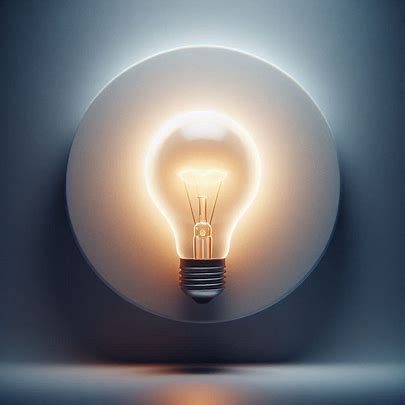Water Availability During Grid Outages is a critical concern for communities relying on electric-powered systems. Here, we address water systems and power dependency. The resilience of a water system during a power grid shutdown or disaster depends on several key factors. By understanding how these systems function in such events, communities and individuals can better prepare for potential disruptions. Below is an overview of how typical water systems operate and the challenges that may arise during prolonged power outages or societal collapse.
Water Availability During Grid Outages – Start Here!
QUICK TIP!

Safely Disinfect a 50-Gallon Water Catchment System with DryTec (68% Calcium Hypochlorite)
Disinfecting a 50-gallon water catchment system with calcium hypochlorite, like DryTec, is straightforward when following these steps:
How to Disinfect Water in Your Catchment
- Calculate the Dosage
For 50 gallons, use approximately 1 teaspoon of calcium hypochlorite (68% active chlorine). This dosage achieves a chlorine concentration of about 5-10 ppm, effectively disinfecting without harshness. - Dissolve Before Adding
Never add calcium hypochlorite directly to your tank. Instead, dissolve the measured amount in a clean container of water, creating a “chlorine solution.” Then, pour this solution into the main tank. - Mix Thoroughly
After adding the solution, mix the water in your tank to distribute the chlorine evenly. - Allow Time to Disinfect
Let the chlorine solution work for at least 30 minutes to 1 hour. This time effectively kills most harmful microorganisms, making the water safer.
When to Add More Disinfectant
- With Each New Fill
Follow the same dosage instructions to add the disinfectant whenever you add a large amount of new water to the tank. - For Regular Maintenance
If your catchment system is static (no new water added) and sealed, add a maintenance dose every 3-4 weeks. Use about half the initial dose to maintain safe chlorine levels.
Essential Safety Tips
Test Periodically
Use a chlorine test kit to check free chlorine levels and ensure they stay within a safe range (1-4 ppm for drinking water).
Handle with Care
Wear gloves and avoid inhaling dust when handling calcium hypochlorite, as it can irritate skin and respiratory systems.
Store Properly
To prevent degradation and maintain effectiveness, keep DryTec in a cool, dry, and ventilated space away from moisture and sunlight.
Address Chlorine Taste or Smell
If the water tastes or smells strongly of chlorine, let it stand uncovered for a few hours to allow excess chlorine to evaporate. Boiling water also reduces residual chlorine.
Typical Water Systems and Power Requirements
Municipal water systems rely heavily on electricity to pump water from treatment plants to storage tanks and into homes. When the power goes out, the ability of these systems to deliver water becomes compromised, sometimes immediately.
In addition, water treatment facilities need the power to treat and purify water properly. Without electricity, the risk of contamination increases. Insufficient treatment can negatively affect water quality, leaving communities vulnerable to waterborne diseases.
Resilience in Emergencies: How Some Systems Stay Functional
Fortunately, some communities have backup generators or alternative power sources, including water treatment plants, dedicated to critical infrastructure. These allow operations to continue, at least temporarily, during short-term outages. However, even with backup systems in place, water distribution may continue only for a limited time, depending on how much water is stored in tanks and the overall duration of the outage.
Water Availability During Grid Outages: Factors Affecting Water Availability During a Power Shutdown
For short-term outages, the impact on water availability may be minimal. Yet, if the outage lasts for an extended period, stored water reserves can run out. As power remains off, maintaining treatment processes becomes increasingly difficult, which could eventually lead to the complete failure of the water system and dry taps in homes.
Societal Collapse Scenarios
Water systems may completely break down in extreme scenarios, such as a societal collapse in which infrastructure is neglected or damaged. Maintenance may cease altogether, leading to contaminated water supplies or a total loss of service. Additionally, disruptions to transportation and supply chains could prevent the delivery of necessary chemicals and resources for water treatment, reducing water quality and availability.
Backup Water Sources: An Essential Contingency Plan
In long-term outages, communities may need alternative water sources, such as wells, reservoirs, or rainwater harvesting systems. When properly maintained, these can be vital lifelines during prolonged disruptions. Access to these sources could make the difference between water scarcity and sufficient supply.
Individually, households are strongly encouraged to maintain emergency water supplies. The general recommendation is one gallon per person daily for at least three days. This basic preparation helps mitigate the risk of water scarcity during extended outages.
The Provident Prepper’s LINK to How to Store Water for Emergency Preparedness.
The Provident Prepper’s LINK to all you have to know about the Category: Water.
Ensuring Water Availability During Grid Outages: Water Purification for Households – Available Options
If access to clean water becomes a challenge, households should be prepared with methods to purify water. Boiling, using purification tablets, or employing water filters can ensure that even compromised water sources are safe to consume. Additionally, when equipped with filtration, rainwater collection systems can provide a reliable water source during prolonged emergencies. (If you didn’t watch the video above, please take the time to go back and view this important message.)
Conclusion: Staying Prepared and Informed
While many disasters don’t immediately affect water systems, significant power grid shutdowns or societal collapses could lead to severe water availability and quality issues. Communities must develop contingency plans that include backup power systems and access to alternative water sources to ensure safe drinking water during these events. Similarly, individuals should store emergency water supplies and have the tools necessary to purify them if needed.
Staying informed about local water systems, their vulnerabilities, and the contingency plans in place will help you better prepare for water-related challenges during emergencies.
